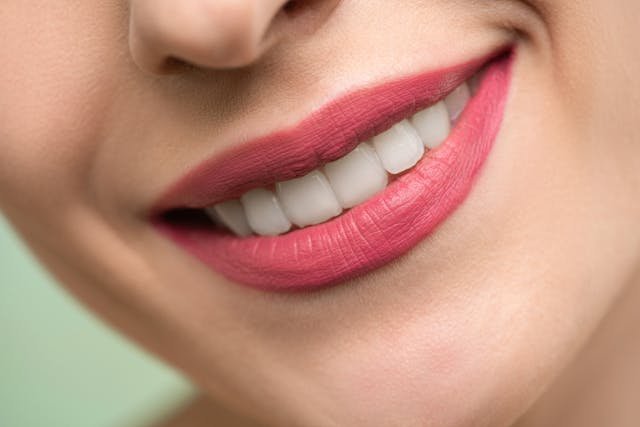Looking good with perfectly aligned teeth is not only a plus for visual appearance, but it also has a deeper meaning – a person’s health improves. Maintaining a healthy smile goes hand in hand with oral hygiene practices and good habits towards dental practices. In addition to regular brushing and flossing, it is beneficial to have many habits and products that play an important role in dental health and the formation of a stunning smile.
Prioritizing Regular Dental Visits
It is imperative to pay regular visits to the dentist to ensure one keeps their teeth strong and healthy before diseases become severe. Such visits often entail professional cleaning as well as checkups that may help in diagnosing early signs of tooth decay, gum diseases, or oral cancer. Such as, with possible early diagnosis of infections, it is easier and more effective to administer basic manipulations free from any severe pain and additional expenses.
Selecting the Right Toothbrush and Toothpaste
Choosing the right toothbrush and toothpaste plays a major role in oral hygiene and dental care. An ideal toothbrush must possess soft bristles to avoid harm to the enamel and gums because the harder bristles may cause abrasion of gums and consequently lead to a recession. Another factor to consider is the size of the head of the toothbrush because smaller heads are more closely adapted to reach all the parts of the mouth, especially the back molars.
Use a Scraper for Tongue
Remarkably, a tongue cleaner is a utensil that may play a vital role in maintaining oral health and achieving the desired results. The tongue has a rough surface, and this acts as a breeding ground for bacteria, food particles and dead skin cells, resulting in a coated tongue and bad breath. Daily usage of a tongue scraper deters this development and minimizes the number of bacteria within the oral cavity that can cause transfer to teeth as well as gums.
The Importance of Flossing Daily
Flossing is equally important and removes the plaque and food particles in the area which cannot be cleaned with a toothbrush. Another reason is that flossing removes plaque before it turns into tartar, which may cause gum diseases and tooth cavities. It also prevents the formation and development of cavities between the teeth and inflammation and bleeding of the gums.
Why Drinking Water Is Important for Healthy Teeth
Drinking water is crucial for the health of teeth and gums since saliva helps in breaking down foods and rinses out the oral cavity otherwise, acids in the mouth are neutralized. Lack of saliva in the mouth due to different reasons, such as lack of water intake or some of the prescribed medications, contributes to formation of cavities and difficulties in fighting against them. Consuming at least 8 glasses of water daily aids in maintaining saliva production, which promotes washing of the mouth.
Reducing the Intake of Foods High in Sugar and Acid
Carbonated beverages, chocolates, candies and other sweets contain high sugar content and acids that cause tooth decay and enamel erosion. When bacteria in the mouth metabolize sugar, they release acid as a waste product, which can erode the enamel and cause tooth decay. Sour products like oranges and soft blends also contribute by directly wearing out the enamel and making teeth more vulnerable to rotting and sensitivity.
Mouthwash: Another Aspect of Your Daily Cleansing Process
Using mouthwash can, therefore, complement the process of brushing and flossing the teeth and have benefits that go beyond those of the two procedures. Antibacterial rinses prevent plaque formation and gingivitis, fluoride rinses prevent cavities and strengthen tooth enamel. Daily use of mouthwash can also make parts of the oral cavity hard to clean using the brush and floss, thus giving an added layer of defense against dental issues.
Adopting a Consistent Oral Hygiene Routine
Patience and persistence is the name of the game when it comes to oral health and attaining a healthier smile. Using the toothbrush, one should brush at least twice a day, flossing daily and using mouth rinse can help one discharge and prevent such dental issues. Daily and weekly consistency in these practices will ensure that the mouth is clean and free from bacteria that may cause cavities, gum diseases and bad breath.
Understanding the Usage of Social Media in Conveying Dental Knowledge
Modern technology and the Internet enable people to find many useful sources that will help them enhance the quality of their teeth and gums. Starting with simple videos and articles that offer guidance on dental issues up to the most complex virtual consultation tools, these platforms offer free access to professional recommendations.
Keeping Your Teeth Safe: Taking the Right Foods
There is no doubt that a proper and nutritional diet plays an important role in maintaining good oral hygiene and having a healthy and bright smile. Calcium-containing foods like dairy products and green leafy vegetables are good for building up teeth and bones. In contrast, vitamin C and D-containing foods such as fruits and carrots are beneficial for gums and help in the absorption of calcium.
Conclusion
The authors also emphasized that the use of proper oral hygiene and regular checkups can help improve the general well-being and satisfaction with one’s appearance. To take good care of your dental health and prevent further problems, one should maintain good habits, a healthy diet and seek medical advice.
















